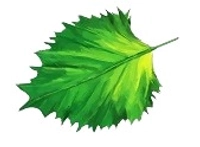Butea Monosperma (Flame of the Forest)
Butea Monosperma, commonly known as the Flame of the Forest or Palash Tree, is a medium-sized deciduous tree native to India and Southeast Asia. Known for its striking orange-red flowers that resemble flames, this tree is a favorite for adding vibrant color to landscapes. The Palash Tree is not just ornamental but holds cultural, ecological, and medicinal significance.
Benefits:
- Ornamental Value: The tree’s fiery orange-red blossoms create a spectacular display during the flowering season, making it a popular choice for gardens, parks, and roadside plantations.
- Cultural Importance: Revered in Indian traditions, the Palash Tree is often associated with festivals and rituals, symbolizing purity and spirituality.
- Ecological Benefits: The tree provides a habitat for various bird species and attracts pollinators like bees and butterflies, contributing to biodiversity.
- Soil Enrichment: Butea Monosperma helps improve soil fertility through nitrogen fixation, making it beneficial for agroforestry.
- Medicinal Uses: Various parts of the tree, including its flowers, bark, and seeds, are used in traditional medicine for treating ailments such as skin disorders, digestive issues, and infections.
Plant Care Instructions:
- Sunlight: The Flame of the Forest thrives in full sunlight and requires at least 6-8 hours of direct sunlight daily.
- Soil: It prefers well-drained sandy or loamy soil but can tolerate a range of soil types, including poor or rocky soils.
- Watering: The tree is drought-tolerant once established. Water regularly during the initial growth phase but reduce watering as the tree matures.
- Fertilization: While it doesn’t require heavy feeding, applying organic compost annually can boost growth and flowering.
- Pruning: Minimal pruning is required. Remove dead or damaged branches to maintain the tree’s shape and health.
Common Problems and Solutions:
- Pest Infestation: Caterpillars and aphids may occasionally attack the tree. Use neem oil or an appropriate insecticide to control pests.
- Fungal Diseases: High humidity may lead to fungal infections. Ensure proper airflow around the tree and use fungicides if needed.
- Poor Flowering: Insufficient sunlight or improper care may result in reduced flowering. Ensure the tree gets adequate sunlight and nutrients.
- Leaf Yellowing: This could indicate water stress or nutrient deficiency. Adjust watering practices and apply a balanced fertilizer.
Please Note: Images are for reference purposes only. Actual product may vary in shape or appearance based on climate, age, height, etc. The product is replaceable but not returnable. Plants will be delivered in black nursery poly bag or pot unless mentioned on the product page.
